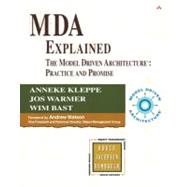
Anneke Kleppe is a consultant and adviser at Klasse Objecten, which she founded in 1995 to train and coach companies on the use of object technology, modeling, and MDA. She was intensively involved in the development of the Unified Modeling Language (UML) and the new UML 2.0 standard. The author of several books, Anneke started a knowledge center for object technology at KPN Research in Leidschendam, Netherlands. She is a member of the authoring team of the OCL 2 standard, where she has a special focus on the definition of the semantics of the OCL.
Jos Warmer is the primary author of the OCL standard. He is an active member of the Unified Modeling Language (UML) Revision Task Force, which defined the revisions in the UML 2.0 standard. Previously he was a member of the UML core team, where he was responsible for the development of the Object Constraint Language (OCL). The author of several books and numerous international articles, Jos is an advisor on the UML method and techniques at the De Nederlandsche Bank.
Wim Bast is Compuware’s OptimalJ MDA architect.The New copy of this book will include any supplemental materials advertised. Please check the title of the book to determine if it should include any access cards, study guides, lab manuals, CDs, etc.
The Used, Rental and eBook copies of this book are not guaranteed to include any supplemental materials. Typically, only the book itself is included. This is true even if the title states it includes any access cards, study guides, lab manuals, CDs, etc.